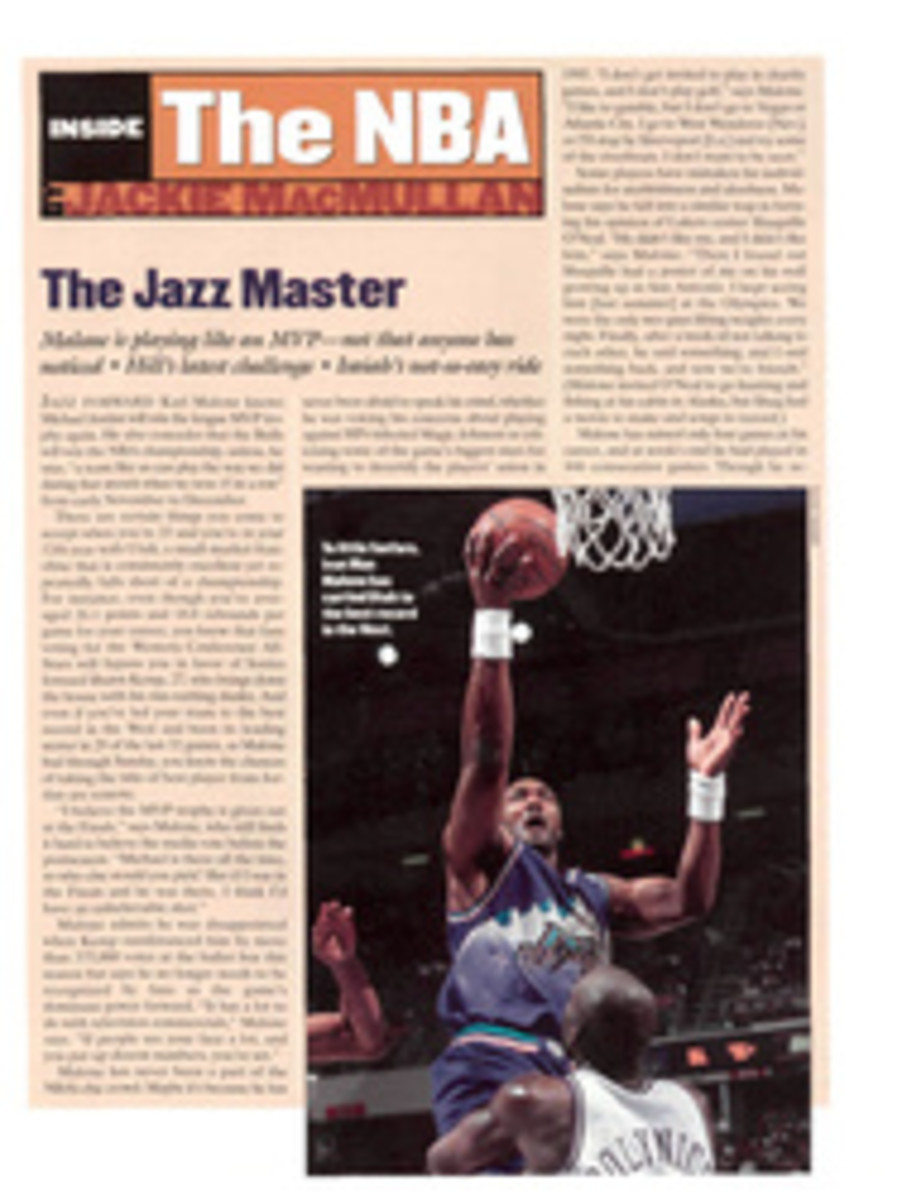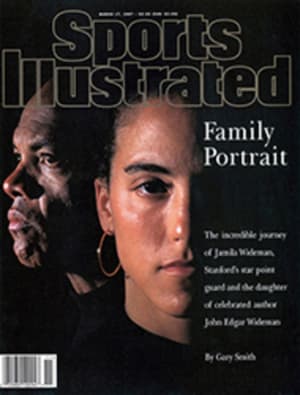
A LEAGUE OF HIS OWN FORMER PACERS STAR ROGER BROWN LEFT BEHIND A LEGACY AS THE ULTIMATE ABA PLAYER
Roger Brown died of liver cancer last week at age 54. If the
name means anything to you, then you're probably one of us.
We're a select--which is to say, small; O.K., cultish--group of
hoop aficionados who loved the American Basketball Association,
which died 21 years ago at age nine. The official cause of death
was neglect. Brown played in the ABA, but he wasn't just another
ABA player. He was the ultimate ABA player.
And when the obit writers summed up Brown's life, they might
have said he was the best player never to play in the NBA. But
if they did, they missed the essence of his career. He was of
the ABA, by the ABA and certainly for the ABA. Here's the
difference between the leagues: When the NBA celebrates its 50th
anniversary and trots out its 50 greatest players, the event is
brought to you by McDonald's or Nike or one of the other Michael
Jordan subsidiaries; if the ABA had had a sponsor, it would have
been Joe's Bail Bondsman.
The ABA was an outlaw league in a time when outlaws were
considered romantic. If you liked Ali, if you liked Namath, if
you liked Dennis Hopper careening to his (cinematic) death on a
motorcycle, you could love the ABA. The league's first important
act was one of outright thievery, stealing Rick Barry from the
NBA after hiring Barry's father-in-law, Bruce Hale, to coach the
Oakland Oaks.
The second big move was declaring amnesty for the guys who had
been banned by the NBA after the college gambling scandals of
the early 1960s. That meant Connie Hawkins. That meant Doug Moe.
That meant Roger Brown, a stylish 6'5" forward who displayed
astonishing quickness to the basket and an accurate long-range
shooting touch, perfect for a league that showcased the
three-point shot.
The NBA had banned Brown and Hawkins, both Brooklyn schoolboy
legends, for their association with gambler Jack Molinas.
Neither was ever charged, much less convicted, of a crime, but
the NBA wasn't concerned with such details.
On the other hand, the ABA had no concerns whatsoever. It took
Julius Erving out of Massachusetts after his junior season, when
the NBA wasn't crazy about drafting underclassmen. It found
George Gervin on the playgrounds of Detroit a year after he had
punched out an opponent in an NCAA college division semifinal
game. It signed Moses Malone out of high school.
What the ABA cared about was entertainment, from the red, white
and blue ball to the first dunk contest. (Erving beat David
Thompson.) Hardly anyone saw the ABA. The games were rarely on
TV. And the teams tended to be in towns like Greensboro and
Louisville and Memphis and Norfolk.
But it was fun, meaning nobody played Cleveland Cavaliers
basketball. It was hyperbasketball. And if you never saw Dr. J
in warmups--yes, in the dunkathon warmups--all I can say is, I'm
sorry.
This was Roger Brown's league. He was the first player signed by
the Indiana Pacers. Oscar Robertson had recommended Brown, who
was 25 and not sure whether he should leave his job at a General
Motors plant in Dayton for the upstart league. Finally, for a
$17,000 salary and a $2,000 signing bonus, he agreed to play.
Here's what the Pacers got for their money: Over eight seasons,
including a 39-game stint with the Utah Stars, Brown averaged
17.4 points and Indiana won three league titles. He was one of
the ABA's top-10 alltime scorers and the Pacer most likely to
take--and hit--a shot when Indiana needed it most. Slick
Leonard, his former coach, remembers Brown and Barry going
one-on-one in the 1972 ABA finals. "It's hard to say who won the
duel," Leonard says, "but we won the series. Now Rick's in the
Hall of Fame, and nobody remembers Roger."
It's fashionable to knock the ABA as a no-defense, all-flash
league. But in the first season after four of its teams merged
with the NBA (1976-77)--the other two clubs were dissolved--four
of the 10 players named to the all-league team were ex-ABAers.
Brown never made it to the NBA. He stayed put when many ABA
stars were jumping. And by the time of the merger it was too
late for him. He had retired two years earlier.
He wasn't Dr. J or Rick Barry or Larry Bird. He was Roger Brown
of the ABA. And I think he would be happy if that's how he is
remembered.
Former ABA beat reporter Mike Littwin writes for the Baltimore
Sun.
B/W PHOTO: HEINZ KLUETMEIER At crunch time Brown was Indy's go-to guy. [Roger Brown in game]

